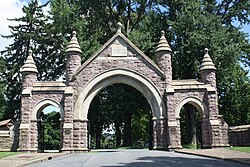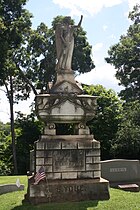
Daniel Chester French was an American sculptor in the late 19th and early 20th centuries. His works include The Minute Man, an 1874 statue in Concord, Massachusetts, and his 1920 monumental statue of Abraham Lincoln at the Lincoln Memorial in Washington, D.C.
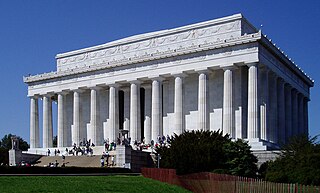
Henry Bacon was an American Beaux-Arts architect who oversaw the engineering and design of the Lincoln Memorial in Washington, D.C., built between 1915 and 1922, which was his final project before his 1924 death.

Hollywood Cemetery is a historic rural cemetery located at 412 South Cherry Street in the Oregon Hill neighborhood of Richmond, Virginia. It was established in 1847 and designed by the landscape architect John Notman. It is 135-acres in size and overlooks the James River. It is one of three places in the United States that contains the burials of two U.S. Presidents, the others being Arlington National Cemetery and United First Parish Church.

Richard Brodhead was an American lawyer and politician from Easton, Pennsylvania. He represented Pennsylvania in both the U.S. House and Senate.

Laurel Hill Cemetery, also called Laurel Hill East to distinguish it from the affiliated West Laurel Hill Cemetery in Bala Cynwyd, is a historic rural cemetery in the East Falls neighborhood of Philadelphia. Founded in 1836, it was the second major rural cemetery in the United States after Mount Auburn Cemetery in Boston, Massachusetts.
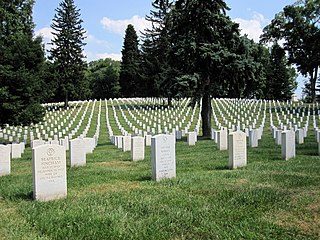
Culpeper National Cemetery is a United States National Cemetery located in the town of Culpeper, in Culpeper County, Virginia. Administered by the United States Department of Veterans Affairs, it encompasses 29.6 acres (120,000 m2) of land, and as 2021, had over 14,000 interments.

Elmwood Cemetery in Detroit is one of Michigan's most important historic cemeteries. Located at 1200 Elmwood Street in Detroit's Eastside Historic Cemetery District, Elmwood is the oldest continuously operating, non-denominational cemetery in Michigan.

Henry Joseph Steele was a Democratic member of the U.S. House of Representatives from Pennsylvania.
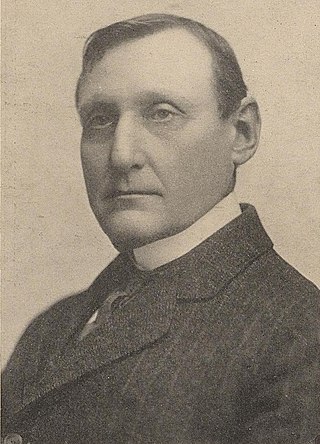
Jefferson Davis Brodhead, also known as J. Davis Brodhead and Joseph Davis Brodhead, was an American lawyer and politician who served as a Democratic member of the U.S. House of Representatives from Pennsylvania for one term from 1907 to 1909.

Howard Mutchler was a Democratic member of the U.S. House of Representatives from Pennsylvania.

William Mutchler was a Democratic member of the U.S. House of Representatives from Pennsylvania.

Fort Hill Cemetery is a cemetery located in Auburn, New York, United States. It was incorporated on May 15, 1851, under its official name: "Trustees of the Fort Hill Cemetery Association of Auburn". It is known for its headstones of notable people such as former Secretary of State William H. Seward, his son, William H. Seward Jr. and abolitionist and freedom fighter Harriet Tubman. It is built on what was once a fortified village of the Cayuga Nation. The cemetery features a 56 ft (17 m). high limestone obelisk monument to Chief Logan, famed chief of the Haudenosaunee.
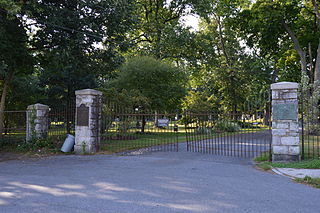
Harrisburg Cemetery, sometimes referred to as Mount Kalmia Cemetery, is a prominent rural cemetery and national historic district in Harrisburg, Pennsylvania, located at 13th and Liberty streets in the Allison Hill/East Harrisburg neighborhoods of the city. It was founded in 1845, though interments took place for many years before.

Magnolia Cemetery is a historic city cemetery located in Mobile, Alabama. Filled with many elaborate Victorian-era monuments, it spans more than 100 acres (40 ha). It served as Mobile's primary, and almost exclusive, burial place during the 19th century. It is the final resting place for many of Mobile's 19th- and early 20th-century citizens. The cemetery is roughly bounded by Frye Street to the north, Gayle Street to the east, and Ann Street to the west. Virginia Street originally formed the southern border before the cemetery was expanded and now cuts east–west through the center of the cemetery. Magnolia contains more than 80,000 burials and remains an active, though very limited, burial site today.

Oakwood Cemetery is a nonsectarian rural cemetery in northeastern Troy, New York, United States. It operates under the direction of the Troy Cemetery Association, a non-profit board of directors that deals strictly with the operation of the cemetery. It was established in 1848 in response to the growing rural cemetery movement in New England and went into service in 1850. The cemetery was designed by architect John C. Sidney and underwent its greatest development in the late 19th century under superintendent John Boetcher, who incorporated rare foliage and a clear landscape design strategy. Oakwood was the fourth rural cemetery opened in New York and its governing body was the first rural cemetery association created in the state.
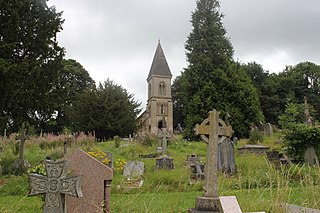
The Anglican Bath Abbey Cemetery, officially dedicated as the Cemetery of St Peter and St Paul, was laid out by noted cemetery designer and landscape architect John Claudius Loudon (1783–1843) between 1843 and 1844 on a picturesque hillside site overlooking Bath, Somerset, England.
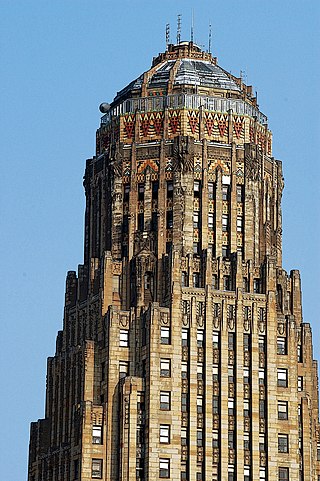
The Architecture of Buffalo, New York, particularly the buildings constructed between the American Civil War and the Great Depression, is said to have created a new, distinctly American form of architecture and to have influenced design throughout the world.
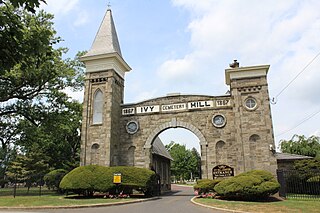
Ivy Hill Cemetery is a public cemetery and crematorium located at 1201 Easton Road in the Cedarbrook neighborhood of Philadelphia, Pennsylvania. Chartered in 1867, it is 80 acres in size and was originally named the Germantown and Chestnut Hill Cemetery. It was renamed Ivy Hill Cemetery in June 1871.
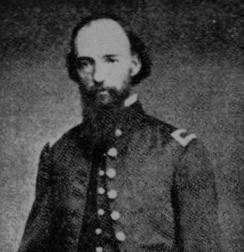
Thomas P. Coates was a 19th-century American musician who achieved initial prominence in Pennsylvania for his performances on the cornet and French horn. The director of Pomp's Cornet Band in Easton, Pennsylvania, he was commissioned as the first conductor of the regimental band of the 47th Pennsylvania Volunteer Infantry Regiment during the early months of the American Civil War. Post-war, he became a prolific and popular composer of band music, and was subsequently nicknamed "the Father of Band Music in America."
